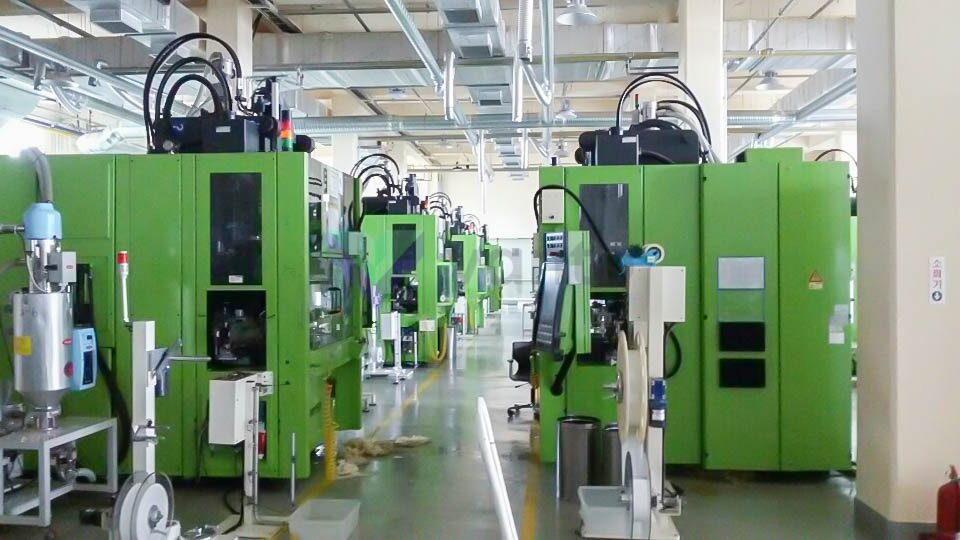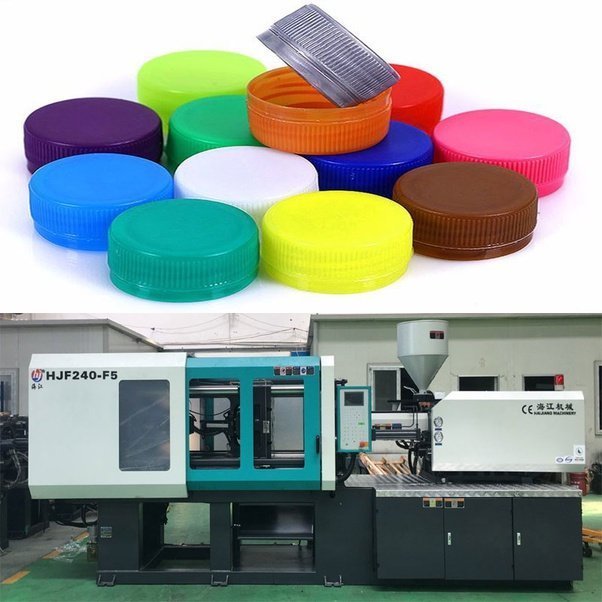Vertical injection molding works on the same fundamental principles as conventional injection molding. The simple variation in orientation makes a huge difference in the manufacturing process. Many manufacturers understand that every little matter when it comes to efficiency. In this article, we look at the features of vertical injection molding machines. With a focus on the ones which make them better for some applications. In doing so we also look at why they might not be so good for some applications. You’d of course want to know if vertical injection molding works for your intended product. We explore some examples of products where vertical injection molding has an advantage.

H1. Process Description
The horizontal injection molding process has long been in use before the vertical. So in some parts of the article, it refers to the horizontal system as the conventional system. Injection molding systems are of different types. The classifications are on different bases. For example, for classification based on the runner. Here we have hot runner systems and cold runner systems. There are also classifications based on when powers the injection process. In that case, we talk about electrical, hydraulic of the one that combines both; hybrid. The article discusses classification based on the orientation of the machine. Other articles within the blog cover other classifications. Horizontal and vertical injection molding machines function on the same fundamental working principles. The difference in their orientation affects how they perform their functions. This is like a human being laying down or standing up. There are some activities that are better performed standing up. Also, some activities are better done while laying down or seated.
Other than orientation difference, the manner in which the mold loads varies. In the vertical injection molding system, the mold moves away from the injection unit. This allows two activities to occur at the same time. The filling of the melt chamber occurs while the mold is being unloaded and reloaded. This is even more important for insert molding.
Mold design in vertical injection molding differs from that of the conventional system. In the simpler design, the top half of the mold remains attached to the nozzle of the injection unit. In this type of vertical injection system, the mold fills, cools, and then opens. The injection unit retracts along with the top half of the mold. This gives time to unload the mold while the next cycle begins filling the injection chamber.
A different design uses a book mold. As the name implies, the mold opens like a book. The mold has a hinge on the side to ease opening and closing. This injection unit detaches from the mold after filling. This type of design has the advantage of ensuring the mold closes and opens, in the same way, every cycle. This is great for insert molding as in ensuring the inserts remain in place. If the inserts move about during the process this could lead to a defect in the product. The vertical injection molding systems are usually installed with a table. This is either a rotating table or one that moves back and forth. This way the operators can work on the mold (loading & unloading) moved away from the injection unit. The image below illustrates the main components of a vertical injection molding system.
H2. Where vertical Injection molding might be Helpful
Now let’s look at the instances where vertical injection molding is a better choice. That is when compared to horizontal injection molding. This section is in essence looking at the advantages of the vertical system.
(1) You have limited Floor Space
The vertical orientation of the mold means it takes up much less space. It has always been a good idea to build upwards than sideways. Think about buildings for instance. In cities with less space, you’d find many story buildings housing more people per square meter. In a similar way, vertical construction is gaining more attention in agriculture. The need to grow more food per square meter is more urgent now. As the population increases, we need more land space for manufacturing and homes. Multistorey car parks? I could go on. More companies are being started on a low budget these days. Chances are if you are a small startup in plastic injection molding, space is scarce. You don’t have more than a few tens of square feet space to work with. Vertical injection molding will allow you to fit your process into a smaller space. You can do this without compromising yield or efficiency.
(2) You are carrying out Insert molding
In some products, plastic covers a preformed object or substrate. The plastic melt molds over the preformed object. This process is to insert molding. A variation of this is overmoulding. This is where the substrate forms first. This then followed by the forming of another plastic over the first object. These processes need the object at the base to remain stable. If the object gets misaligned during the process, this leads to a defected products. The vertical molding process makes this easier. This is because the substrate gravity helps hold the insert in place. The insert sits in the mold and the machine injects the melt. The mold cools, the product gets removed and the cycle repeats. The loading and demolding occur either by the operators or by using robotic arms. To do this in the horizontal injection molding design would be more cumbersome. The horizontal systems are usually designed to open up the mold and the product drops into a bin.
(3) You want better Energy and Material Efficiency
The vertical design allows you to make the most of gravity. In the horizontal design, the pellets fed into the hopper need exerted force to move. This is because they move against gravity in the horizontal axis through the barrel. In the vertical injection molding system, gravity aids movement. Gravity also aids the flow of the melt. In conventional injection molding, the shot size is larger. This is because it includes the material retained in the melt chamber. In the vertical orientation, there is less chance of melt retention in the chamber. This reduces wastage of plastic and of energy used. Plastics tend to degrade upon repeated heating. So it is not desirable to have melt retained in the barrel. This exposes the plastic to heat for longer. If gravitational force is forcing the downward flow of pellets and melt. This means less chance of backflow. So in the vertical injection molding, the check valve at the nozzle might not be necessary. At the very least if it exists, it would be doing less work and wouldn’t need as much replacement.
The pressure required to hold the mold in place as it cools is also derived from the weight of the injection unit. Where it includes a clamping unit, this is only done as an added safety measure. This also reduces the labor in the opening and closing of the mold. The lifting off of the injection unit to begin another cycle does the job if opening and closing the mold.
(4) You are Producing more than One Design with the Same Material
The vertical injection molding always comes with a form of moving table. This is either rotating or going back and forth. This allows for the loading and unloading of the mold and/or the insert. This means different inserts placed in the mold and different molds used in one cycle. Note that although vertical injection molding is great for inserts and different molds. This does not make it any less ideal for uniform molding of identical parts with no inserts or overmolds.
H5. Example products made using Vertical Injection Molding
Vertical injection molding makes diverse products. This includes all products made using horizontal injection molding. The purpose of this section is to look at some specific application scenarios. In particular, those which especially have better output using vertical injection molding. Having this prior knowledge aids discussion with a professional mold maker or manufacturer. This helps you understand better what works best for your intended product.
Medical products
Many medical devices need to incorporate other materials into thermoplastic objects. Injection molding these parts allow seamless design. Methods like machining and joining carry the risk of surface imperfections and holes. Any surface faults serve as a hiding spot for microbes even during sterilization. Examples are sensors. These have the metallic components embedded within a thermoplastic structure. Other examples are wires, surgical tools, tubes, and cables.
Electronics
In electronics, it is often required to connect different conductors in a circuit. The circuits need insulation to protect the users and also protect the components. Manufacturers achieve this by encasing the components within plastics or other insulating materials. Insert molding is often used in the production of such electronics. As discussed herein, insert molding is best achieved using vertical injection molding.
Hand Tools
Many hand tools are a combination of a strong hard component like metal. These components need to have a good grip for effective handling. Plastics and elastomers are often used as the handle of these tools. Many of these tools have large forces exerted on them. For this reason, the attachment between the grip and the main component must be strong. Gluing and welding often introduce weak spots which lead to breakage. Such failure while using the tools can be quite dangerous. For such products, insert molding achieves better attachment. Molding the plastic around the hard component creating a permanent seal.
Automotives and equipment
Equipment and vehicles can have up to hundreds of components and over 1000 steps in one product. Many of these components joined together as one unit to perform a single function. Several injection molded parts occur in vehicles and many types of equipment. Many of these use vertical injection molding. Examples of such components include filters, car keys, brackets, connectors, and circuits. Products such as these have a useful lifespan of several years, decades even. Vehicles in particular have several moving parts. These parts must be durable and well installed. So the parts need high standard using advanced techniques like vertical injection molding. The process also allows for better aesthetics beyond what conventional injection molding offers.
In general avoiding glues, welding and other joining reduce product components needed. It also increases the number of stages needed to build the part. In every manufacturing process, introducing more components means more room for failure. Introducing more stages also does the same. Vertical injection molding reduces the opportunities for defects. This is especially true when adapted for insert molding
Vertical injection molding has the same advantage and limitations as conventional injection molding. For example, shrinkage will still occur as it would in the horizontal system. When using cold runners, scrap is still an issue that processors must handle. The materials molded using the horizontal system is still the same as those in vertical. Having the right information helps to decide if vertical injection molding is suitable.

